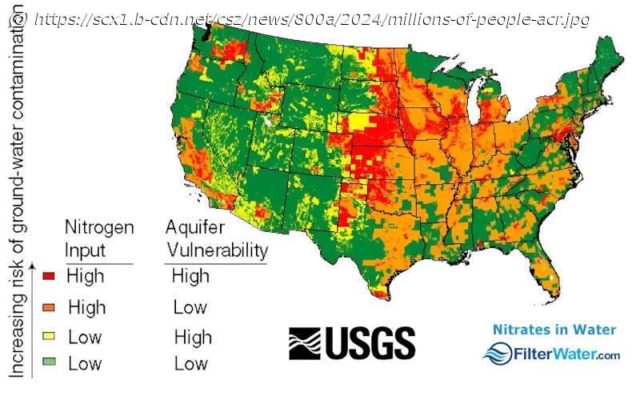About 23 million U.S. households depend on private wells as their primary drinking water source. These homeowners are entirely responsible for ensuring that the water from their wells is safe for human consumption.
About 23 million U.S. households depend on private wells as their primary drinking water source. These homeowners are entirely responsible for ensuring that the water from their wells is safe for human consumption.
Multiple studies show that, at best, half of private well owners are testing with any frequency, and very few households test once or more yearly, as public health officials recommend. Even in Iowa, which has some of the strongest state-level policies for protecting private well users, state funds for free private water quality testing regularly go unspent.
Is the water these households are drinking safe? There’s not much systematic evidence, but the risks may be large.
The U.S. Environmental Protection Agency still relies on a 15-year-old study showing that among 2,000 households, one in five households’ well water contained at least one contaminant at levels above the thresholds that public water systems must meet. While other researchers have studied this issue, most rely on limited data or data collected over decades to draw conclusions.
I’m an economist studying energy and agriculture issues. In a recent study, I worked with colleagues at Iowa State University, the University of Massachusetts Amherst and Cornell University to understand drinking water-related behaviors and perceptions of households that use private wells. We focused on rural Iowa, where runoff from agricultural production regularly contaminates public and private drinking water sources.
We found that few households followed public health guidance on testing their well water, but a simple intervention—sending them basic information about drinking water hazards and easy-to-use testing materials—increased testing rates. The burden of dealing with contamination, however, falls largely on individual households.
We focused on nitrate, one of the main well water pollutants in rural areas. Major sources include chemical fertilizers, animal waste and human sewage.
Drinking water that contains nitrate can harm human health. Using contaminated water to prepare infant formula can cause «blue baby syndrome», a condition in which infants’ hands and lips turn bluish because nitrate interferes with oxygen transport in the babies’ blood. Severe cases can cause lethargy, seizures and even death. The EPA limits nitrate levels in public water systems to 10 milligrams per liter to prevent this effect.






